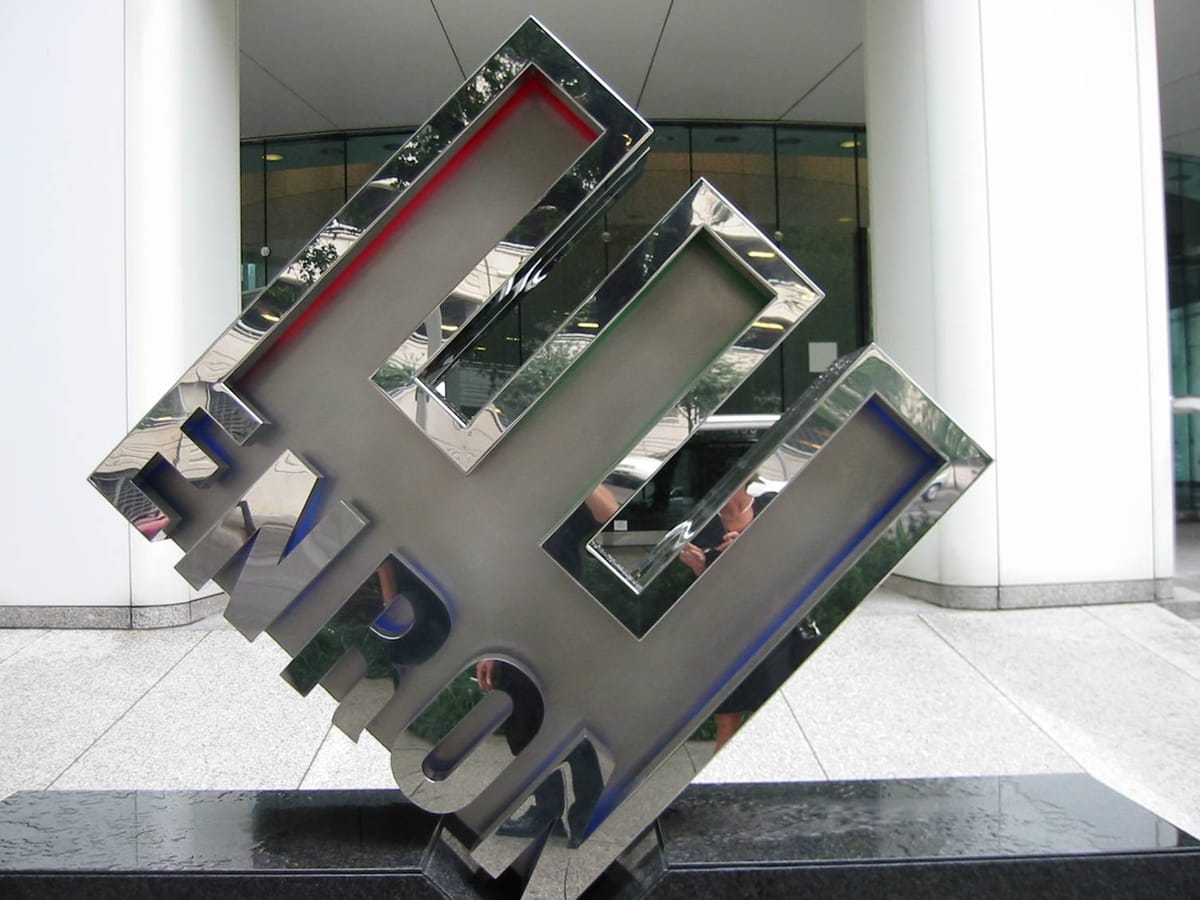Enron's Shocking Return: From Bankruptcy to Bitcoin and Back to Energy
The infamous energy giant that collapsed in 2001 is making headlines again—but this time, it's not what you'd expect.
Twenty-three years after one of the most spectacular corporate collapses in American history, the Enron name is back in the spotlight. But before you assume this is about traditional electricity retail, the plot twist is far more intriguing: Enron is pivoting toward cryptocurrency and blockchain technology, with hints at eventually returning to its energy roots in Texas.
The Phoenix Rising from Financial Ashes
The new Enron isn't technically the same company that went bankrupt in 2001. Instead, it's a strategic acquisition of the dormant brand name by a group of entrepreneurs who see value in the notoriety. In late 2024, the company launched with a provocative tagline: "We're back. Can you handle it?"
The relaunch has been anything but subtle. The company's new leadership has embraced the controversial legacy, positioning themselves as disruptors who aren't afraid of the baggage that comes with the name. Their initial focus? Blockchain technology and cryptocurrency solutions for the energy sector.
From Scandal to Blockchain: The Strategic Pivot
Rather than immediately jumping back into retail electricity, the new Enron is taking a calculated approach. The company has announced plans to develop blockchain-based energy trading platforms and cryptocurrency solutions for renewable energy projects. This isn't entirely surprising—energy and cryptocurrency have become increasingly intertwined, particularly with the rise of Bitcoin mining operations seeking cheap, renewable power sources.
The company's executives have been vocal about their intentions to eventually return to Texas's deregulated electricity market, but they're approaching it through a technology-first lens. Their strategy involves:
- Developing smart contracts for energy trading
- Creating cryptocurrency incentives for renewable energy adoption
- Building blockchain-based grid management systems
- Establishing partnerships with existing Texas retail energy providers
Texas Market Dynamics: A Different Landscape
Today's Texas electricity market bears little resemblance to the one Enron dominated in the 1990s. The state's deregulated market now serves over 29 million residents through more than 100 retail electric providers. The market has matured significantly, with stronger regulatory oversight and consumer protections implemented after the original Enron scandal.
The Electric Reliability Council of Texas (ERCOT) has also evolved, incorporating more sophisticated grid management technologies and renewable energy integration. This creates both opportunities and challenges for any company attempting to enter the market, regardless of their name recognition.
Regulatory Hurdles and Public Perception
The path back to energy retail won't be simple. The new Enron faces significant regulatory scrutiny, with the Public Utility Commission of Texas likely to examine any applications closely. The company will need to demonstrate not only financial stability but also operational competence and ethical governance—areas where the original Enron famously failed.
Public perception remains another hurdle. While the provocative marketing has generated buzz, it's unclear whether Texas consumers will embrace a brand associated with corporate fraud and market manipulation. Early social media reactions have been mixed, with some praising the bold rebranding while others express skepticism about the company's motives.
The Technology Angle: More Than Just Marketing
Despite the attention-grabbing name, the new Enron appears to have legitimate technological ambitions. The company has hired several veterans from the cryptocurrency and renewable energy sectors, suggesting this isn't merely a publicity stunt. Their blockchain-based approach to energy trading could potentially address some of the transparency and accountability issues that plagued the original company.
The timing aligns with broader trends in the energy sector, where blockchain technology is increasingly being used for peer-to-peer energy trading, renewable energy certificates, and grid optimization.
What This Means for Texas Energy Consumers
For now, Texas electricity customers won't see immediate changes. The new Enron is still in the development phase, focusing on building their technology platform before pursuing retail electricity licenses. However, their eventual entry could bring innovation to a market that has seen relatively stable pricing and service offerings in recent years.
The company's emphasis on technology-driven solutions and renewable energy integration could potentially benefit consumers through more efficient pricing models and improved service delivery—assuming they can overcome the regulatory and reputational challenges ahead.
The Bottom Line
While the Enron name carries significant historical baggage, the company's return represents a fascinating case study in brand rehabilitation and market re-entry. Whether this proves to be a legitimate transformation or merely an elaborate marketing exercise remains to be seen. For Texas energy consumers, the key will be watching how regulators respond and whether the company can deliver on its technological promises while maintaining the transparency and ethical standards the original Enron so notoriously lacked.
The energy sector has always been about calculated risks—and betting on the Enron name might just be the biggest gamble of all.
